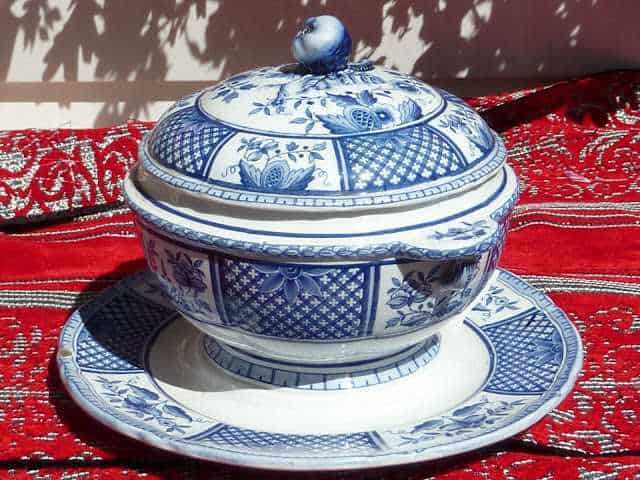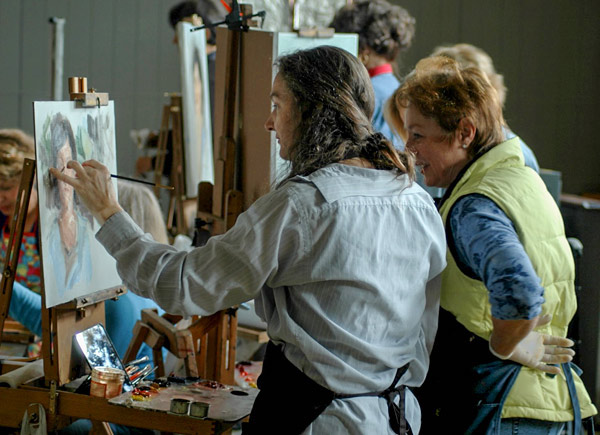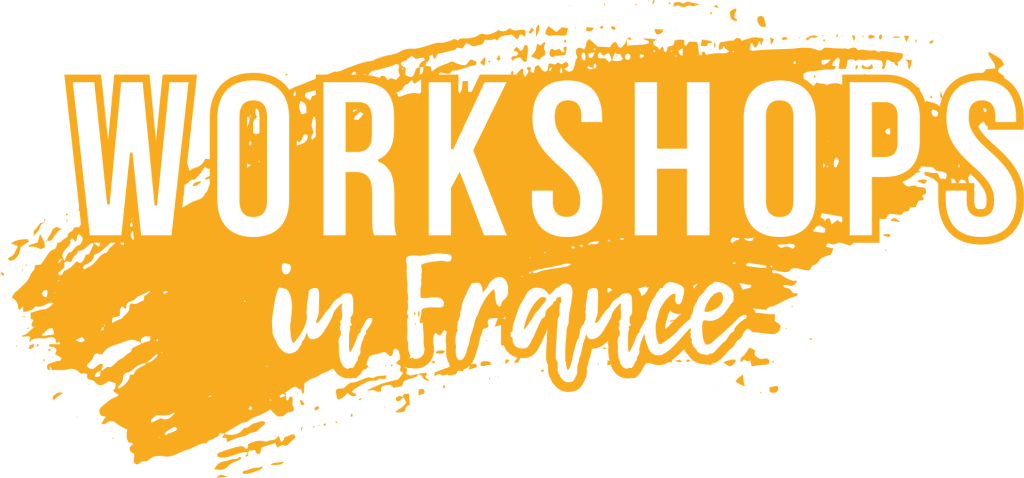Make the Leap and Visit Auvers-Sur-Oise

Walk in the footsteps of Vincent van Gogh as we visit Auvers-Sur-Oise, the picturesque village where he spent the final months of his life, creating some of his most iconic works. This inspiring destination is part of our itinerary during our workshop Making the Leap: The Fine Art of Business, a transformative art business workshop led by Vanessa Rothe
The Wonder of Lavender in Provence

Your first step into a lavender field is a complete sensory invasion.
First there’s the unique color, and then the unforgettable scent. When a breeze crosses the field, it becomes a sea of undulating purple. Then there’s the constant sound of…
Dreaming of Glorious Provence in Glorious Color

If you asked an artist “What would be your dream painting trip look like?”, their answer would inevitably include a myriad of details that perfectly describe the landscape and colors of Provence. Every season in Provence is an artist’s dream, but September ranks high as one of our favorite times to travel to the South of France.
Soup Tureen or Chamber Pot?

One of our favorite things to do while in France is to visit a vide-grenier. A vide-grenier is literally translated as “empty your attic” and rather than just being a flea market or village-wide yard sale, it can be an event filled with treasures.
The French You Already Speak

You Already Know More French Than You Think. Just for fun, we started looking at the French words that have been in common usage in the English language for a long time. Remarkably, many of these words seem to pop up in the realms of culture and cuisine. No surprise there, as France is known for exactly that – their wonderful culture and delicious cuisine. Let’s start right here with food! Cuisine “Cuisine” – This is exactly the same word in both languages. Let’s look at some more… You already know so many of them! With this in mind, rest assured you won’t starve! “Restaurant, chef, café, vinaigrette, gâteau, sauce, pique-nique, salade, soupe, aperitif, menu, croissant, hamburger, chocolat.” Ha! And, there’s “silhouette”, which might change depending on your consumption of the aforementioned. The Arts and La Renaissance We also find a host of French words in the world of art. Florence, Italy was the epicenter of the greatest rebirth of creativity which the Italians call the ‘Rinascimento,’ but in English and in French we refer to it as the Renaissance. Art in French is ‘Art’, pronounced Arr, even in the plural. Let’s look at a few more art terms. Art nouveau, art deco (art décoratif), artist (artiste), impressionism (impressionisme), avant-garde, realism (réalism), surrealism (surréalisme), cubism (cubisme), trompe l’oeil, paper maché (papier-mâché) and film noir. Although French is also the language of ballet, it was actually brought to France from Italy by Catherine de Medici. Ballet dancing as we know it was adopted by the French royal courts where it flourished. “Cuisine” – This is exactly the same word in both languages. Let’s look at some more… You already know so many of them! With this in mind, rest assured you won’t starve! “Restaurant, chef, café, vinaigrette, gâteau, sauce, pique-nique, salade, soupe, aperitif, menu, croissant, hamburger, chocolat.” Ha! And, there’s “silhouette”, which might change depending on your consumption of the aforementioned. Royalty and French French was the official language of the courts, that is, the Royal courts. Around 700 years ago it was the most widely spoken language throughout all of Europe. At that time, the rulers in Europe used French to communicate with each other. It was spoken by their liaisons and international treaties were hashed out in French. No doubt a few French swearwords were tossed around at those who disagreed. French was the language of the gentry. It was generally seen as the language of sophistication, power and wealth. It became a popular second language. By the end of the middle ages, the lingua franca of Europe was indeed French. Of course, the term ‘lingua franca’, is Latin and not French, but it means the language used between people who do not share a common language. A contemporary example of a lingua franca would be Emoji. ❤️ 🇫🇷 🍷 Pronunciation So, you do know these words, but do they sound French when you say them? Probably not. It’s the pronunciation that makes them French. So here’s the mini-lesson of French pronunciation. It’s very general, but it should help. Firstly, the French pronounce every syllable without the English way of stressing one syllable over the others. Take “pronunciation”. We say “PRO-NUN-SEE-AISHUN”, with the stress on NUN, the French would say each syllable – “PRO-NUN-SEE-A-CEE-ON”. If that doesn’t slow you down a bit, the French also tend to drop or swallow the very last consonant if it ends the word. Yes, drop the last consonant, unless the next word starts with a vowel, in which case you need to add it back in. Complicated? Oui! Even More French To round out this blog on the French words you already know, look at these: R.S.V. P. (Répondez S’il Vous Plaît); bourgeois; brunette; blonde; déjà vu; fiancée; chic. All French and all English too. There must be so many more but hopefully these will give you a little confidence about being able to speak this beautiful language. In order to gain more understanding of French and the culture of France, may we suggest that you drink good coffee, share excellent wine and come join us on an artistic and inspirational journey with WorkshopsInFrance. Blogger: Julie Snyder Julie Snyder is a professional artist and also the programs director of Workshops In France. A native of Scotland, she is a seasoned traveler who splits her time between California and France. You can learn more about her role with Workshops in France here and about her painting on her website.
Rose Frantzen: A National Treasure

Rose Frantzen is a truly quintessential artist, personifying all that is unique and extraordinary about what it means to be a painter. Working primarily in oil, she specializes in figurative works, landscapes, still lifes, and thematic projects. We are very proud to be hosting a masterclass workshop with Rose Frantzen, which will take place in Provence, July 15-23, 2024. Portrait of Maquoketa After studying at the American Academy of Art in Chicago, with Richard Schmid at the Palette and Chisel Academy, and then with the late Deane G. Keller at the Lyme Academy College of Fine Arts, Frantzen returned to her hometown of Maquoketa, Iowa, making it the center and study of her artistic endeavor. One landmark project undertaken by Frantzen is entitled Portrait of Maquoketa, which focuses exclusively on the citizens of the town. The project consists of 180 individual 12” X 12” oil portraits, painted over the course of a year from a Main Street storefront, of anyone in the town who wished to pose for her. This is how she describes the project on her web site, “I wanted to paint my neighbors and fellow Maquoketans without any selection or choice on my part, attempting to capture a direct portrayal of the people around me. Together, we could democratize portraiture, allowing anyone to be painted just by showing up and participating.” From 2009-2010, Portrait of Maquoketa was shown for eight months at the Smithsonian National Portrait Gallery in Washington, D.C. Iowa Figge Art An expanded version of the project was shown in 2012-2013 at Davenport, Iowa’s Figge Art Museum. To complete her full vision for this exhibit, Frantzen painted a 315-square-foot landscape view of the town, which was broken up into 34 vertical panels. Seen from one end of the installation, the panels comprise what one would see if they were standing in the hills outside of Maquoteka. The 180 portraits of the townspeople are mounted on the reverse of the panels. Fritzen’s husband, Chuck Morris, assisted with mapping and engineering the landscape so that the panels coalesce from one point of view. John Frantzen, the artist’s brother, composed audio compositions to accompany the exhibit. The compositions include voices of the portrait subjects combined with the landscape’s natural sounds. Ultimately Portrait of Maquoketa was purchased by the Figge Art Museum, which alternately shows the installation in the museum, and tours it to other locations. In the Face of Illusion Another intriguing project undertaken by Frantzen is entitled In the Face of Illusion. This exhibit consists of portraits and figures that are integrated with optical illusions. Of the exhibit, Rose is quoted on her web site as asking, “Can we trust ourselves so much? Optical illusions remain persistent, even when we rationally know that we are seeing things incorrectly. If misperception happens with simple lines and shapes, why wouldn’t this also occur when we encounter something as complex as another human being or maybe even ourselves?” Frantzen’s other work has been widely exhibited at the Denver Historical Museum, the Butler Institute of American Art, the Cedar Rapids Museum of Art, and she is a multi-award winner with the Portrait Society of America’s International Portrait Competition. In addition to showing her art at the Figge Art Museum, Franzen’s work is included in the permanent collections at the Brunnier Art Museum and the Dubuque Museum of Art. Frantzen’s paintings have also been pictured in international art magazines. Franzen frequently conducts art demonstrations, guest lectures, and participates in art discussion panels. In addition to their other work, Frantzen and her husband, Chuck Morris, operate the non-profit Maquoketa Art Experience on Main Street in Maquoketa. The Art Experience offers exhibitions of regional art, art classes, and a creativity café. Learn more about Rose Frantzen’s Workshop and sign up here.
The Wonder of Lavender in Provence

Your first step into a lavender field is a complete sensory invasion.
First there’s the unique color, and then the unforgettable scent. When a breeze crosses the field, it becomes a sea of undulating purple. Then there’s the constant sound of…
Bonjour Decoded

To get the most out of your trip to France, you have to connect with the locals – and the best way to connect is to speak their language. Even if you don’t speak French, in large cities like Paris, most locals speak a good amount of English. But if you walk up and try to start a conversation in English, they’ll likely be a little less than willing to help. So, start with the one word of French you must know to speak their language! Fortunately, learning a few easy phrases makes a world of difference. It Starts With Bonjour Always, always, always start every interaction with a French person with “Bonjour”, or “Bonsoir” if in the evening. To do otherwise is considered extremely rude. Asking directions? Say bonjour! Buying a baguette? Say bonjour! If you’ve ever heard that the French can be rude, it’s probably because the person didn’t say bonjour! Oh, and resist the temptation to say excuse me (excusez moi) before you say bonjour. You’ll just make the person wonder what you did wrong! Then ask “Parlez-vous Anglais?” meaning, “Do you speak English?” Locals appreciate it when you at least attempt to speak their language, even if you’re terrible at it. Usually, they’ll answer with a smile and say yes or no. Head’s up – In smaller French cities and towns, locals often speak little or no English. In these areas, you’ll want to have a translator handy. Apps Help! Several smart phone apps are available for free downloads – Google Translate is one of the most popular. Using the app, you can download a language pack before your trip, so it won’t require data when you’re abroad. This is important because your U.S. phone plan likely charges exorbitant international data fees, and many phone apps require data. With Google Translate, you can type in anything and it will translate from English to French and vice versa. You can also use your phone’s camera to hover over signs and menus and see a translation. This feature is extremely useful when you’re at a restaurant reading through “Le plat du jour,” or the daily special. Speaking of food, you’ll want to check out these tips for eating in France. And when you’re ready to end with a thank you, say “Merci”, then “au revoir” which means “See you again!” Even if it’s someone at the train station who you know you’ll never see again! If you want to sound like a local, you can also add goodbye with “Bonne journée” (pronounced bon joornay) and wish them a good day! Where there is a plan to meet up again soon, you can really impress them with your French by casually throwing out “À plus!” (pronounced Ah ploose) which is short for “See you later.” Enjoy your trip and remember to sign up for our newsletters to receive insider travel tips and stories. Au Revoir! Blogger: Julie Snyder Julie Snyder is a professional artist and also the programs director of Workshops In France. A native of Scotland, she is a seasoned traveler who splits her time between California and France. You can learn more about her role with Workshops in France here.
Sorolla at the Hôtel de Caumont, Aix-en-Provence

For anyone attending one of our two Lavender Art Retreats near Aix-en-Provence this summer, there will be an extra special added event: the Hôtel de Caumont Art Centre in Aix-en-Provence will be presenting an exhibition of the Spanish painter Joaquin Sorolla, entitled Joaquin Sorolla, Spanish Lights.
Americans in Paris, George Gershwin and Gene Kelly

When Workshops in France partners with Vanessa Rothe Fine Art to present the historical workshop Americans In Paris Paint Provence in September of this year, we will be following a tradition that goes well beyond painting.
